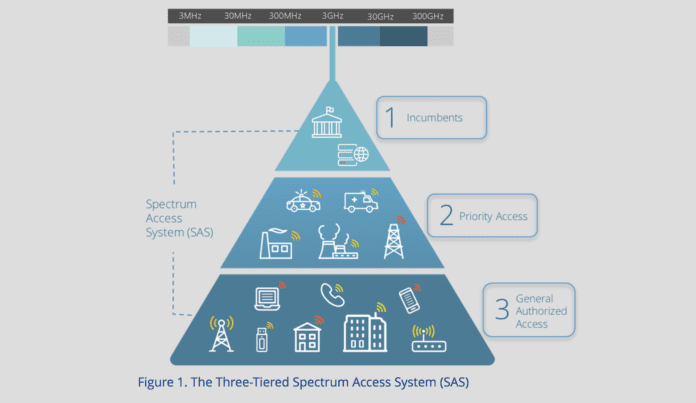Google, CommScope announce cooperation on CBRS sensor network in run-up to rule finalization
CommScope and Google will be jointly developing, deploying and operating a coastal sensor network that is one of the key pieces for enabling operations in the shared Citizens Broadband Radio Service spectrum.
The Environmental Sensing Capability network is a network of sensors to be located along the U.S. coasts; it is required in order to detect the presence of ship-borne naval radar systems which are one of the protected incumbents in the tiered spectrum-sharing framework for CBRS. The Spectrum Access Systems which coordinate spectrum access among the three tiers of users must either use data from an ESC for dynamic protection of incumbents, or use a methodology based on exclusion zones along the coasts.
“The ESC represents more than a check-the-box capability. To effectively manage spectrum, a SAS relies on accurate ESC notifications — that eliminate false positive readings — from a high-availability sensing network,” said Milo Medin, VP of wireless services at Google, in a statement.
Both CommScope and Google already have developed their own SAS offerings, and they plan to each provide SAS services while jointly operating an ESC network. Google has developed an ESC sensor and cloud decision engine and says it will be operating the cloud that communicates with each SAS. CommScope, meanwhile, will deploy and manage the physical ESC network. The companies said that will share responsibility for the overall ESC network design, which they noted must be “engineered for high availability with the built-in redundancy and fault detection necessary.”
CommScope and Google said they are working with the FCC and other agencies to get their ESC certified.
The FCC just this week released a public notice outlining the registration procedures for sensors and the certification process for ESC networks. The FCC’s Wireless Telecommunications Bureau and Office of Engineering and Technology are the designated entities for overseeing the ESC certification process and facilitating the testing and development of ESCs.
“All ESC operators must complete a two-stage review process before final certification and approval by the Commission,” the commission said in its public notice. “The first wave of ESC operators completed the first stage of the review process on February 21, 2018, when WTB/OET conditionally approved their ESC operator proposals. As part of the second stage of the review process, ESC operators must deploy approved sensors that cover DPAs and secure approval of their coverage plan before deploying as a certified ESC.”
CommScope and Google said that their joint ESC “leverages the technical capabilities of each company with a consolidated footprint – resulting in more places to deploy CBRS and higher availability spectrum for operators of CBRS-based networks.”
“This critical network infrastructure agreement represents a major commitment to CBRS by two major SAS providers and will help to ensure that the opportunities presented by CBRS will soon be realized,” said Ben Cardwell, senior vice president, CommScope Mobility Solutions, in a statement. “Together, we can bring about a combined ESC network faster and more efficiently, leveraging the combined capabilities of two major companies.”
“Environmental Sensing Capability systems are a key component to permit sharing and robust use of the 3.5 GHz band,” FCC Commissioner Michael O’Rielly said in a recent statement on the public notice of the sensor registration and ESC network certification processes. He went on to add that those procedures are “one of the last steps before making the band fully operational and open for business. If all goes well, ESCs could be certified by the end of the year or very early 2019.”

